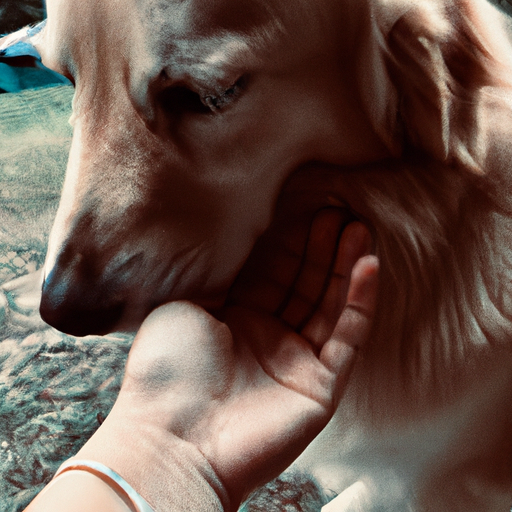Understanding Your Dog’s Emotional Intelligence
The bond you share with your dog is not just a product of shared affection and cohabitation. It’s a connection that taps into your dog’s emotional intelligence. Studies suggest that dogs, like humans, can sense emotions. They read your facial expressions, pick up on your vocal cues, and react to your emotions through your body language.
How Dogs Sense Sadness
Dogs, being highly intuitive animals, have an uncanny way of sensing their human’s emotional state. They do this through several means:
- Observing Your Body Language: Dogs are masters at reading body language. They notice when your posture changes or when you’re not as active as usual.
- Listening to Your Tone of Voice: Dogs can pick up on subtle changes in your voice. They know when you’re upset or anxious, even if you’re trying to hide it.
- Smelling Your Scent: Believe it or not, dogs can sense stress or sadness through your scent. Changes in your body chemistry can cause changes in your scent, which your dog can pick up on.
These abilities, combined with their loyalty and desire to please, make dogs keenly aware of when you’re feeling sad.
Dogs’ Response to Human Sadness
When dogs sense their owners’ sadness, their response can vary:
- Some dogs may act more submissive, respectful of your need for space.
- Others may become more protective, staying close to guard you.
- Many dogs become more affectionate, attempting to comfort you with their presence, nuzzles, or licks.
- Some dogs may even mimic your emotions, appearing sad themselves.
Remember, your dog is not just a pet, but an empathetic companion who truly wants to help when you’re feeling down.
The Science Behind the Emotional Connection
A table summarizing a few significant studies on this topic:
| Study | Finding |
|---|---|
| Nagasawa et al., 2015 | Dogs can differentiate between different human emotions and often mirror their owners’ emotions. |
| Albuquerque et al., 2016 | Dogs are more likely to approach a person who’s crying than someone humming or talking. |
| Siniscalchi et al., 2018 | Dogs can tell the difference between human emotions based on facial expressions alone. |
Nurturing the Emotional Bond with Your Dog
To keep this emotional bond strong:
- Spend quality time with your dog – play, train, or simply cuddle.
- Maintain open body language – dogs can sense when you’re tense or closed off.
- Talk to your dog – your tone can reassure them, even if they don’t understand the words.
- Keep routines – dogs find comfort in predictability.
Frequently Asked Questions
Q: Can dogs sense other emotions, like happiness or anger?
A: Yes, dogs can sense a wide range of human emotions, including happiness, anger, stress, and even fear.
Q: Does breed affect a dog’s ability to sense human emotions?
A: While some breeds are known for their empathy, all dogs have the ability to connect emotionally with their owners.
Q: Can my emotions affect my dog’s behavior long term?
A: Yes, prolonged exposure to stress, anxiety, or sadness can impact a dog’s behavior and mental health. It’s important to manage your emotions around your pets.
Q: How can I help my dog understand my emotions better?
A: Regular interaction, socialization, and training can improve your dog’s ability to understand and respond to your emotions.



